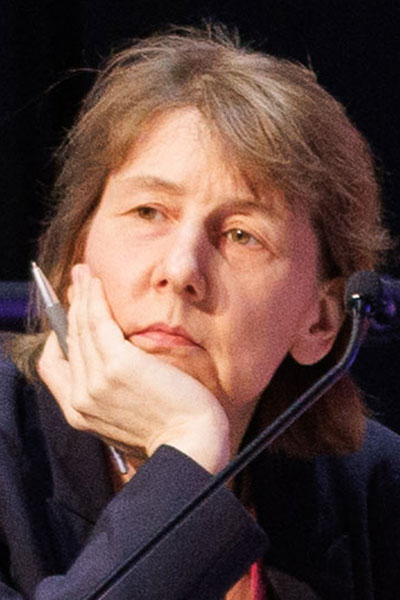Following 4 days of non-stop data and practice-changing sessions, a panel of experts reviewed some of the ways they expect information presented at SABCS 2022 to adjust practice and make an immediate impact in the clinic during the View from the Trenches: What to do on Monday Morning? session on Friday, December 9.

Mediget Teshome, MD, MPH, FACS, Associate Professor of Breast Surgical Oncology, The University of Texas MD Anderson Cancer Center, discussed changes in the surgical management of the breast and axilla. Two studies, ACOSOG Z11102 looking at the impact of breast conservation therapy on local recurrence in patients with multiple ipsilateral breast cancers, and OPBC-04/EUBREAST-06/CMA, comparing sentinel lymph node biopsy (SLNB) and targeted axillary dissection (TAD) changed practice.
ACOSOG Z11102 found only 3.1% local recurrence in 204 patients with 2-3 ipsilateral breast malignancies treated with breast conserving therapy. Unrelenting oncologic safety is especially important in this population, Dr. Teshome noted. At the same time, breast conserving therapy is strongly associated with improved quality of life and patient satisfaction.
“It is difficult to make definite conclusions based on the small numbers of patients in some of these subgroups, but this is a low rate of local recurrence,” she said. “It is quite reasonable to consider MRI to determine the extent of disease in patients presenting with >1 malignancy in the breast.”
OPBC-04/EUBREAST-06/CMA compared TAD vs. SLNB with selective excision of any clipped, biopsy-proven axillary nodes following neoadjuvant chemotherapy. Loco-regional recurrence rates were similar between the two arms with an overall cumulative incidence of 1.5% at 3 years and 2.7% at 5 years. Invasive recurrence rates were likewise similar between the two arms with a cumulative incidence of 7.5% at 3 years and 10% at 5 years.
“Early outcomes suggest similar oncologic safety,” Dr. Teshome said. “And adjuvant radiation should still be considered while awaiting results from a trial of radiation in node-positive patients after neoadjuvant chemotherapy.

Richard Zellars, MD, William A. Mitchel Professor and Chair of Radiation Oncology at the Indiana University Simon Comprehensive Cancer Center, discussed conventional vs. hypofractionated proton radiotherapy after mastectomy and immediate breast reconstruction.
“There are clear benefits of protons over photos,” Dr. Zellars said, “However the optimal dose and fractionation have yet to be identified.”
The non-inferiority trial was not powered to detect any differences in progression-free survival, he added. The surprise was that hypofractionated proton radiotherapy failed to show non-inferiority vs. conventional radiotherapy.
The proton dose, 40 Gy, may be too high, Dr. Zellars suggested, given older data suggesting that 16 Gy is appropriate, but for now, he plans to avoid hypofractionated radiotherapy in this population.

Cynthia Villarreal-Garza, MD, PhD, Director of Medical Oncology at the Breast Cancer Center, Tecnologico de Monterrey, Nuevo Leon, Mexico, discussed the impact of the POSITIVE trial on fertility and pregnancy during breast cancer treatment.
Breast cancer incidence in younger women is growing, Dr. Villarreal-Garza noted, with about half of women diagnosed with luminal cancer. At the same time, younger patients are more likely to receive more aggressive and prolonged treatment, which can interfere with planned pregnancies.
“Fertility concerns are important but there were no prospective data around taking a break of up to 2 years in endocrine therapy for pregnancy and breastfeeding,” she said. “Then these women return to ET for 5-10 years of total treatment.”
POSITIVE found no difference in cancer outcomes for women who took a treatment holiday for childbearing and no difference in either fetal or maternal outcomes compared to historical controls without cancer.
“This study shows the safety of a treatment break, but it should not be a general recommendation,” Dr. Villarreal-Garza said. “It is only applicable to this specific group of patients.”

Mariana Chavez-MacGregor, MD, MSc, FASCO, Associate Professor of Health Services Research and Breast Medical Oncology, The University Texas MD Anderson Cancer Center, discussed the practical impact of antibody-drug conjugates (ADCs) in breast cancer. Researchers have been trying to link antibodies and toxic payloads since at least the 1950s, but the first approval came in 2000. By 2022, more than 100 ADC candidates were in different stages of clinical research. Three agents, sacituzumab govitecan (SG), trastuzumab deruxtecan (T-DXd) and ado-trastuzumab emtansine (T-DM1) have been approved in breast cancer.
“We heard a lot of exciting data about ADCs in San Antonio,” Dr. Chavez-MacGregor said. “We have choices in HER2-positive (T-DM1 and T-DXd), HER2-negative (SG), and HER2-low (T-DXd) breast cancers. And we have SG in metastatic TNBC. We are going to have to change our treatment algorithms; we just don’t know quite how yet.”

Kalliopi Siziopikou, MD, PhD, Professor of Pathology and of Oncology and Director of Breast Pathology at the Northwestern University Robert H. Lurie Comprehensive Cancer Center, discussed the growing recognition of HER2-low breast cancer. HER2-low is as much a change for pathologists as it is for clinicians.
“For the last 20 years, the discussion has been how to identify HER2+ patients,” Dr. Siziopikou said. “We didn’t want to miss a single patient. Now we have a bigger task, and that is to identify HER2-low patients using assays that were not designed for the job.”
Exhaustive testing suggests that current assays can identify HER2-low breast cancers with reasonable accuracy so long as the current 2018 criteria are followed.
The problem is that HER2 expression is not stable. Expression changes and evolves over time in the same tumor in the same patient.
“Instead of a single number, we should probably view HER2-low as a tumor that showed some level of HER2 expression on the current or any prior tumor,” Dr. Siziopikou advised. “Instability in expression is the nature of the disease.”
Nor is it clear how low HER2-low can go. New assays and new technologies push the boundaries of detection ever lower but need validation in larger clinical trials to assess the therapeutic effects of ultralow levels of expression.

Tanja Fehm, MD, PhD, Professor and Head of Gynecology and Obstetrics at the Heinrich-Heine University, Dusseldorf, Germany, added insights on management of HR+/HER2- metastatic breast cancer after progression on CDK4/6 inhibition. CDK4/6 inhibition is first line standard of care, but most patients will develop resistance within 11-28 months and progress. Sequential endocrine mono or combination therapies are commonly used in the second and third lines.
“The problem is very limited prospective data to guide treatment decisions after clinical progression on CDK4/6 inhibition,” she said. “ESMO guidelines recommend somatic mutation testing with chemotherapy if there is risk of imminent organ failure and a variety of endocrine and targeted therapies if there is time.”
More current data suggest other options.
MAINTAIN showed a progression-free survival benefit for ribociclib and switching ET after failing existing CDK4/6 inhibition.
PADA1 showed improved PFS by changing treatment from AI/palbociclib to fulvestrant/palbociclib at the onset of ESR1 mutation with dynamic ctDNA monitoring.
The PACE Trial showed improved PFS by changing the current ET to fulvestrant and adding avelumab, an anti-PD-L1 immune checkpoint inhibitor. Palbociclib + fulvestrant alone did not boost PFS.
“The most promising results come from switching the ET backbone and switching the CDK4/6i to ribociclib, with anecdotal evidence for abemaciclib,” Dr. Fehm said. “We need a better understanding of the mechanisms driving resistance to ET and to CDK4/6i.”



